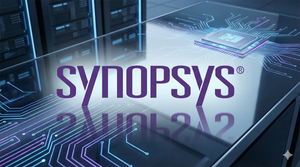Transplanted hypoimmune (HIP)-modified allogeneic CD19-targeted CAR T cells control CD19+ tumor cells in fully immunocompetent allogeneic humanized mice, evading both the adaptive and innate immune systems
Allogeneic HIP CAR T cells can be produced with novel gene editing platform CRISPR/Cas12b at large scale and high gene-editing efficiency
HIP-modified allogeneic BCMA-targeted CAR T cells demonstrate in vitro efficacy and cytokine production against BCMA+ target cells against multiple myeloma
Fusosomes specifically transduce primary, non-activated CD8+ T cells to generate highly functional CAR T cells capable of eliminating CD19+ tumor cells in animal models with two dosing strategies
SEATTLE, Dec. 11, 2022 (GLOBE NEWSWIRE) -- Sana Biotechnology, Inc. (NASDAQ: SANA), a company focused on creating and delivering engineered cells as medicines, shared data in six presentations at the 64th American Society of Hematology (ASH) Annual Meeting and Exposition, taking place from Saturday, December 10 to Tuesday, December 13, 2022 in New Orleans, LA, which highlighted further progress with key technologies supporting Sana’s ex vivo allogeneic CAR T cell programs and in vivo platform.
“Our HIP platform has the potential to transform the CAR T space, and with it, the treatment of hematologic malignancies, and we are pleased to share data from several drug candidates before our planned entry into the clinic in 2023,” said Terry Fry, M.D., Sana’s Senior Vice President and Head of T Cell Therapeutics. “Separate oral presentations show that our HIP-modified allogeneic CD19-targeted CAR T cells can evade immune detection and kill tumor cells in a fully immunocompetent preclinical model, including with serial in vivo tumor stimulation, and that our manufacturing process is able to produce HIP-modified allogeneic CAR T cells reproducibly at scale with high gene editing efficiency and yield. We intend to develop this platform broadly to treat patients with lymphoma, leukemia, and multiple myeloma with a goal of three INDs over the next several years, including one this year for SC291 targeting CD19 positive cancers and one next year for SC263 for patients who have failed a CD19-directed CAR T therapy.”
Transplanting cells or tissues from a donor to a different recipient currently requires intense immunosuppression to prevent rejection of the transplant. The goal of Sana’s hypoimmune (HIP) platform is to eliminate the need for immunosuppression by cloaking cells from immune recognition while at the same time generating the manufacturing scale and reproducibility of allogeneic cells. The challenge for the field to date in generating immune cloaked cells has been turning off both the adaptive and innate immune system concurrently. Sana’s platform includes disruption of major histocompatibility (MHC) class I and MHC class II expression to hide cells from the adaptive immune system, which includes antibody and T cell responses, as well as overexpression of CD47 to inhibit activation of the innate immune cell system, in particular macrophages and natural killer (NK) cells. The company has presented data across multiple preclinical models highlighting the potential of this platform to cloak cells from immune recognition. Sana’s goal is to use these HIP-modified cells to replace damaged or missing cells in the body in a number of different diseases, including, among others, cancer and type 1 diabetes.
On Sunday, December 11, Sonja Schrepfer, M.D., Ph.D., Sana’s Senior Vice President and Head of Hypoimmune Platform, gave an oral presentation (Abstract 485) titled “Engineered Hypoimmune CAR T Cells Provide Lasting Tumor Control in Fully Immunocompetent Allogeneic Humanized Mice.” This presentation demonstrated that CD47 is an important mechanism to avoid innate immune rejection. CD47 overexpression comprehensively inhibits macrophage and NK cell killing after the disruption of MHC class I and MHC class II expression, making it a more complete approach against innate immune cell killing compared to other strategies. A single dose of HIP-modified CD19-targeted CAR T cells was able to eliminate CD19+ tumors in immune competent animals, including after tumor rechallenge, indicating that these cells may be able to persist and maintain anti-tumor efficacy without immunosuppression.
On Sunday, December 11, Christina Chaivorapol, Ph.D., Sana’s Vice President, Translational Technologies, gave an oral presentation (Abstract 663) titled “Efficient and Specific Multi-Locus Editing of Allogeneic CAR T Cells for Hypoimmunity during Large Scale Manufacture Using Cas12b.” The presentation outlined the use of a novel of CRISPR enzyme, Cas12b, to engineer allogeneic hypoimmune CAR T cells at large scale in order to prevent recognition and clearance by the host immune system while maintaining anti-tumor efficacy. Cas12b has been highlighted in prior studies as exhibiting a high level of on-target editing specificity. Assessment of genome integrity of T cells manufactured using Cas12b demonstrated highly specific editing with no significant off-target editing and no evidence for editing-associated structural modifications beyond those expected from on-target cleavage. These data indicate that this scaled manufacturing process can produce fully engineered HIP-modified CD19-targeted allogeneic CAR T cells with high editing efficiency and specificity.
On Saturday, December 10, Sana scientist Darin Salloum, Ph.D., presented a poster (Abstract 1974) titled “Functional T Cell Assays Are Predictive of Pre-Clinical Potency to Generate Allogeneic, Hypoimmune CD19 CAR T Cells.” The presentation highlighted the use of several in vitro and in vivo assays to categorize T cells derived from healthy, allogeneic donors into excellent-, good-, or poor-performing T cells. These “stress test” assays may be used to identify T cell quality differences which may be used to select donors and reduce batch variability for allogeneic, HIP-modified CAR T manufacturing. Sana’s manufacturing process appears to create, in a replicable fashion, high quality T cells at a scale with the potential for hundreds of doses per batch.
On Saturday, December 10, Sana scientist Adam Johnson, Ph.D., presented a poster (Abstract 1988) titled “A Dual-Antigen Targeting, Hypoimmune Allogeneic CAR T to Evade Innate and Adaptive Immune Rejection and Overcome Antigen Escape.” The presentation showed that a dual-transduction method using lentivirus encoding CD47-CD19CAR and CD47-CD22CAR could reproducibly generate dual-targeted hypoimmune CAR T cells, maintain CD47 overexpression for HIP function, and eliminate both CD19 and CD22 knockout tumor cell lines. Sana is developing SC263, a HIP-modified, CD22-directed CAR T with a clinically-validated CAR with the potential to treat patients with B cell malignancies who have not responded, relapsed, or are refractory to previous CD19-targeted CAR T therapies. The company expects to file an IND in 2023.
On Sunday, December 11, Sana scientist Jeremy Kinder, Ph.D., presented a poster (Abstract 3168) titled “BCMA-Targeted, Hypoimmune Allogeneic CAR T Cells Exhibit Potent Anti-Tumor Activity Together with the Ability to Evade Innate and Adaptive Immune Rejection in Pre-Clinical Tumor Models.” The presentation showed that, in pre-clinical tumor models, HIP-modified BCMA-directed CAR T cells with the clinically-validated CT103A CAR construct licensed by Sana in January 2022 controlled myeloma tumor cells equivalently to HIP-modified CAR T cells with approved BCMA CAR constructs. In addition, HIP-modified BCMA CAR T cells showed equal in vitro efficacy and cytokine production against BCMA+ target cells compared to non-HIP BCMA CAR T cells. These data support advancing an allogeneic, HIP-modified BCMA-directed CAR T product to treat myeloma. Sana expects to file an IND for product candidate SC255 as early as 2024 to treat multiple myeloma.
On Sunday, December 11, Sana scientist Jesse Green, Ph.D., presented a poster (Abstract 3457) titled “CD8-Targeted, Integrating Viral Vectors Transduce Resting T Cells and Enable Extracorporeal Delivery (ECD) for Rapid CAR T Cell Therapies.” The presentation highlighted that CD8-targeted CD19 CAR fusosomes are able to specifically transduce primary, non-activated CD8+ T cells to generate highly functional CAR T cells capable of eliminating CD19+ tumor cells in animal models. This result was accomplished by both a short-term ex vivo incubation with T cells followed by infusion, termed extracorporeal delivery (ECD), or by direct IV injection of fusosomes into animals engrafted with peripheral blood mononuclear cells. Data generated demonstrate ECD and direct IV are potential dosing options for patients with this fusosome for the in vivo production of CAR T cells. The company expects to study SG295, an in vivo CAR T with CD8-targeted fusosome delivery of a CD19-targeted CAR, in patients with B cell malignancies. With increased potency from a second-generation manufacturing process, SG295 has the potential to generate a comparable number of CAR T cells to current ex vivo manufacturing processes. The company remains on track to file an IND in 2023.
About Sana Biotechnology
Sana Biotechnology, Inc. is focused on creating and delivering engineered cells as medicines for patients. We share a vision of repairing and controlling genes, replacing missing or damaged cells, and making our therapies broadly available to patients. We are a passionate group of people working together to create an enduring company that changes how the world treats disease. Sana has operations in Seattle, Cambridge, South San Francisco, and Rochester. For more information about Sana Biotechnology, please visit https://sana.com/.
Cautionary Note Regarding Forward-Looking Statements
This press release contains forward-looking statements about Sana Biotechnology, Inc. (the “Company,” “we,” “us,” or “our”) within the meaning of the federal securities laws, including those related to the Company’s vision, progress, and business plans; expectations for its development programs, product candidates and technology platforms, including its pre-clinical, clinical and regulatory development plans and timing expectations, including with respect to the expected timing of IND filings for the Company’s product candidates; expectations regarding the potential impact of the Company’s technologies and therapies; potential implications of the data presented at ASH; the potential ability of the HIP platform to cloak cells from immune recognition; the potential ability of HIP-modified CD19-targeted CAR T cells to persist and maintain anti-tumor efficacy without immunosuppression; the potential ability to manufacture fully engineered HIP-modified CD19-targeted allogeneic CAR T cells with high editing efficiency and specificity using Cas12b; the potential benefits of “stress test” assays with respect to the Company’s allogeneic, HIP-modified CAR T manufacturing process, and the potential advantages of such manufacturing process; the potential of SC263 to treat patients with B cell malignancies who have not responded, relapsed, or are refractory to previous CD19-targeted CAR T therapies; and the potential of ECD and direct IV as potential dosing options for SG295. All statements other than statements of historical facts contained in this press release, including, among others, statements regarding the Company’s strategy, expectations, cash runway and future financial condition, future operations, and prospects, are forward-looking statements. In some cases, you can identify forward-looking statements by terminology such as “aim,” “anticipate,” “assume,” “believe,” “contemplate,” “continue,” “could,” “design,” “due,” “estimate,” “expect,” “goal,” “intend,” “may,” “objective,” “plan,” “positioned,” “potential,” “predict,” “seek,” “should,” “target,” “will,” “would” and other similar expressions that are predictions of or indicate future events and future trends, or the negative of these terms or other comparable terminology. The Company has based these forward-looking statements largely on its current expectations, estimates, forecasts and projections about future events and financial trends that it believes may affect its financial condition, results of operations, business strategy and financial needs. In light of the significant uncertainties in these forward-looking statements, you should not rely upon forward-looking statements as predictions of future events. These statements are subject to risks and uncertainties that could cause the actual results to vary materially, including, among others, the risks inherent in drug development such as those associated with the initiation, cost, timing, progress and results of the Company’s current and future research and development programs, preclinical and clinical trials, as well as the economic, market and social disruptions due to the ongoing COVID-19 public health crisis. For a detailed discussion of the risk factors that could affect the Company’s actual results, please refer to the risk factors identified in the Company’s SEC reports, including but not limited to its Quarterly Report on Form 10-Q dated November 2, 2022. Except as required by law, the Company undertakes no obligation to update publicly any forward-looking statements for any reason.
Investor Relations & Media:
Nicole Keith
investor.relations@sana.com
media@sana.com





